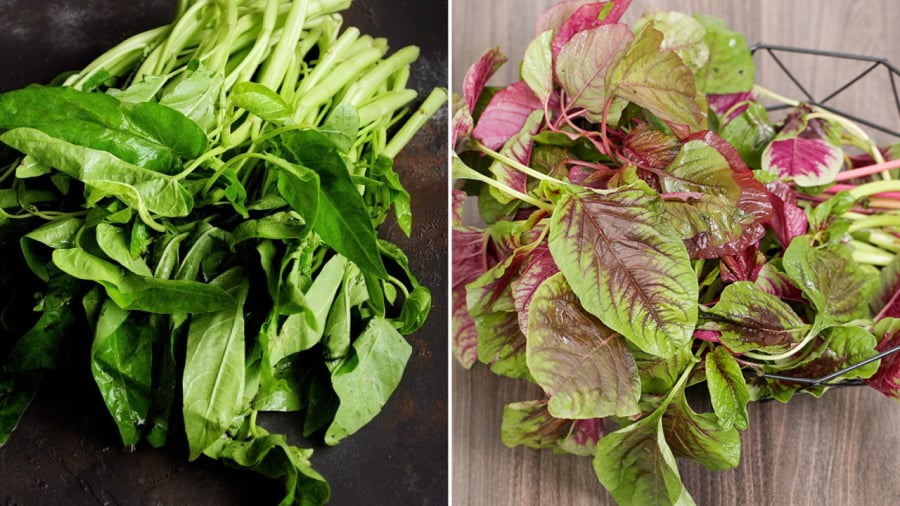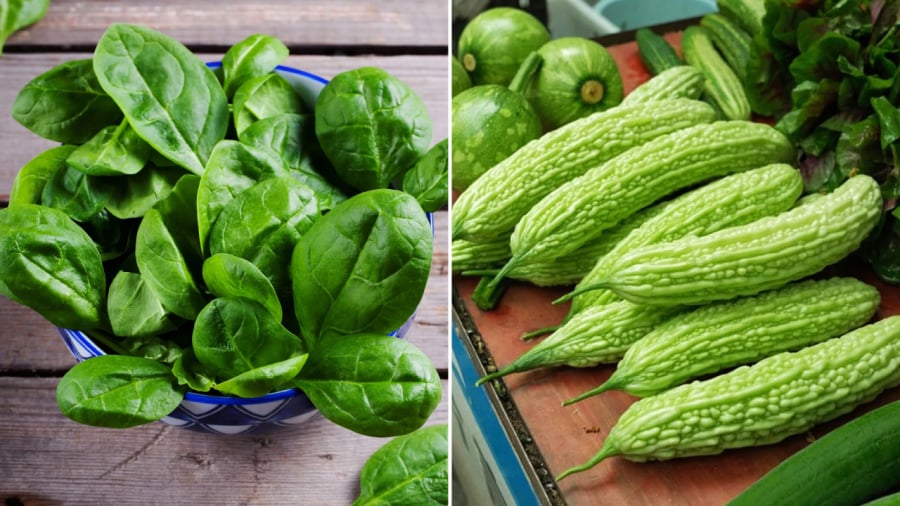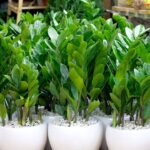Oxalic acid, also known as oxalate, is an organic compound commonly found in a variety of plants, most notably in leafy greens. This substance can reduce the rate and extent of mineral absorption in the body. It combines with calcium ions to form calcium oxalate, which can eventually precipitate and form kidney stones. Moderate consumption of oxalic acid is not known to cause significant harm. However, long-term and excessive intake of foods rich in oxalic acid may increase the risk of kidney stone formation.
The following is a list of vegetables and fruits with high levels of oxalic acid. It is advisable to consume these in moderation to maintain optimal health:
– Water spinach
Water spinach is a familiar vegetable commonly found on dinner tables in many households. This vegetable is a good source of vitamins, potassium, chlorine, and other essential nutrients for the body. However, 100 grams of water spinach can contain up to 691 mg of oxalic acid. Therefore, it is recommended to consume water spinach in moderation and not in excess. To reduce the oxalic acid content, you can briefly blanch the vegetable in boiling water before consumption.

Water spinach and amaranth are high in oxalic acid.
– Amaranth
Amaranth provides important nutrients such as vitamin C, carotenes, iron, and calcium. However, 100 grams of amaranth contains a significant amount of oxalic acid, reaching up to 1142 mg. Therefore, those with a history of kidney stones should exercise caution when consuming this vegetable.
– Spinach
Spinach is often hailed as a superfood due to its high nutrient density and abundance of vitamins and minerals. Nevertheless, it also contains relatively high levels of oxalic acid, which can bind to calcium in the body. This can lead to the formation of crystals in urine that are difficult to expel. Over time, these crystals can accumulate and form stones.
As such, it is advisable to consume spinach in moderation and not on a daily basis. Similar to other vegetables, briefly blanching spinach in boiling water can help reduce its oxalic acid content.

Spinach and bitter melon have high levels of oxalic acid.
– Bitter melon
Bitter melon is valued for its cooling and detoxifying properties, and it is a good source of vitamins and minerals. It can be consumed directly, cooked in savory dishes, or dried and brewed into a beverage. However, it’s important to note that bitter melon has a high oxalic acid content. One hundred grams of bitter melon can provide up to 459 mg of oxalic acid, so it’s advisable to consume it in moderation.
– Red beets
Red beets are a good source of vitamins and antioxidants, which help reduce inflammation. However, they also contain significant amounts of oxalic acid, which can inhibit the absorption of calcium and zinc in the body, while also increasing the risk of kidney stone formation.
One important precaution to prevent kidney stone formation is to stay adequately hydrated. Water plays a crucial role in flushing out waste products from the body. Dehydration increases the risk of kidney stone formation. It is advisable to avoid beverages that may contribute to this risk, such as sugary drinks, boba tea, and alcoholic beverages. Adjustments to the diet are also important, and individuals with kidney stones should closely follow their doctor’s instructions to prevent the condition from worsening.
Purslane: A Superfood with Multifold Health Benefits
According to Traditional Eastern Medicine, water celery has a pungent and slightly cold property. It is known for its detoxifying and cooling properties, making it an effective herb for clearing heat and resolving toxicity, promoting diuresis, and reducing edema. Ancient medical texts have long praised the invaluable benefits of this humble herb.



































